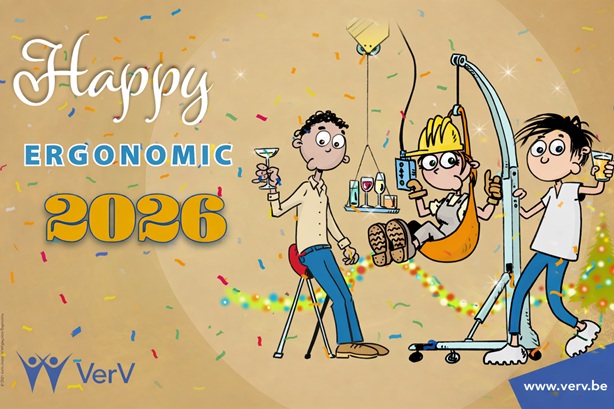10-10-10-campaign
On 11 October at 10 a.m. we all stand up for 10 minutes
Will you participate too? With this call, we ask everyone with a sedentary profession to collectively switch work postures for 10 minutes at 10 a.m. on 11 October. That means: stop sitting and stand up or move instead. You can participate from the office, but also from home when you’re teleworking.
Why switch postures?
On average, we sit for more than 8 hours a day, office workers even up to 11 hours. Sitting for more than 10 hours a day increases your risk of (premature) death with nearly 35% compared to someone who sits for only 1 hour a day. In addition, many people find it difficult to concentrate and feel less energetic during such a “sitting marathon”. This is why getting up every half hour is important to stay healthy and to reduce the risk of cardiovascular disease, obesity and type 2 diabetes.
Convinced? Show us on 11 October how you vary your work postures by sharing an original photo on social media with #switchpostures. You could win a “Steppie”, an ergonomic balance board from Health2Work to help you switch postures even more efficiently! The winner will be announced on VerV’s LinkedIn page.

Switching work postures for dummies: 5 tips
1. Working upright actually works
A sit-stand workstation is a great way to switch from sitting to standing from time to time and work upright more. If you spend too much time in your chair, raise your desk to elbow height and you will immediately feel an energy boost, just by standing up. If you don’t have a sit-stand workstation or if you work from home, take regular breaks: go for a glass of water or go outside for a few minutes. In the office, get up and go to your colleague if you want to ask him or her something, instead of sending an email or calling.

2. Phone call? Don’t just sit there!
A phone call is the ideal opportunity to break your sitting routine, stretch your legs or walk around a bit, even at home. Make it a habit! It won’t cost you any time and you’ll add a few steps on your pedometer. When it’s nice outside, get some fresh air and some sunshine while you’re on the phone. Talk about killing two birds with one stone!

3. Meetings don’t have to mean sitting down
If you have a short meeting, why don’t you make it stand-up one? You’ll make better decisions and the meeting will be over faster. You don’t have to stay in your chair during long meetings either, though. Stand up regularly and encourage your colleagues to do the same. Make sure to take enough breaks during longer meetings, it’s a good opportunity go for a short walk.
Is your meeting of the digital kind? No problem: put your laptop on a shelf – or, if you’re teleworking, an ironing board or even the kitchen counter – and stand while participating. Good to know: most online meeting tools have a mobile app so you can use your smartphone to participate. This way, you don’t have to be glued to your chair during all those meetings. You can even go for a stroll while participating.

4. Keep moving during your (lunch) break
Take enough time in the afternoon to eat and take a break. You don’t necessarily have to sit down either: you can stand at a high table to eat. If you want to activate your lunch break even more: go for a short walk or bike ride, it’ll pick you right up. If you work in an office, why not get a few colleagues to go with you? Take regular breaks outside of lunch as well, to get you away from your chair and your screen. This way, you’ll return to your tasks with a rested body and a fresh mind.

5. Opt for active travel
Avoid going to work by car. If the distance is too great to cycle, perhaps you can walk, cycle or use public transport for part of your journey. In short: avoid traffic jams, opt for sustainable transport and spend less time sitting still.
Do you work from home and is cycling or walking to work no longer an option? Go outside anyway, before or after work or during a break. Go for a walk or a bike ride, alone or with a family member: it will fill your body with energy and empty your head. Because being outside, even for short periods, does wonders for your mood. You’ll also get your daily dose of vitamin D, improving your resistance. Win-win!


